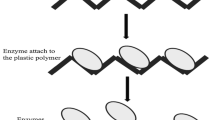Raman spectroscopy, ultraviolet, visible, and near infrared (UV–Vis–NIR) reflectance spectroscopy, and X-ray fluorescence (XRF) spectroscopy were used to characterize black Tahitian cultured pearls and imitations of these saltwater cultured pearls produced by γ-irradiation, and by coloring of cultured pearls with silver nitrate or organic dyes. Raman spectra indicated that aragonite was the major constituent of these four types of pearl. Using Raman spectroscopy at an excitation wavelength of 514 nm, black Tahitian cultured pearls exhibited characteristic 1100–1700 cm–1 bands. These bands were attributed to various organic components, including conchiolin and other black biological pigments. The peaks shown by saltwater cultured pearls colored with organic dyes varied with the type of dye used. Tahitian cultured and organic-dye-treated saltwater cultured pearls were easily identified by Raman spectroscopy. UV–Vis–NIR reflectance spectra showed bands at 408, 497, and 700 nm derived from porphyrin pigment and other black pigments. The spectra of dye-treated black saltwater pearls showed absorption peaks at 216, 261, 300, and 578 nm. The 261-nm absorption band disappeared from the spectra of γ-irradiated saltwater cultured pearls. This suggests the degradation of conchiolin in the γ-irradiated saltwater cultured pearls. XRF analysis revealed the presence of Ag on the surface of silver nitrate-dyed saltwater cultured pearls.
Similar content being viewed by others
References
P.-C. Southgate and A.-C. Beer, Aquaculture, 187, 97–104 (2000).
S. Karampelas, E. Fritsch, J.-P. Gauthier, and T. Hainschwang, G&G, 47, 31–35 (2011).
H. Wang, X. W. Zhu, Y. N. Wang, M. M. Luo, and Z. G. Liu, Aquaculture, 358–359, 292–297 (2012).
J. T. Wang, J. L. Liang, and M. S. Peng, Bull Miner. Petrol. Geochem., 18, 407–409 (1999).
J.-J. Myeong, J.-L. Sang, K. Yuri, G.-S. Jun, Y.-K. Hae, L. Yiheng, Y. Yoshiaki, and H.-L. Byeong, Opt Express, 19, 6420–6432 (2011).
M. Yasunori and M. Tadaki, Jpn. J. Appl. Phys., 27, 235–239 (1988).
D. Habermann, A. Banerjee, J. Meijer, and A. Stephan, Nucl. Instrum. Methods Phys. Res., B181, 739–743 (2001).
S. Karampelas, E. Fritsch, J.-Y. Mevellec, J.-P. Gauthier, S. Sklavounos, and T. Soldatos, J. Raman Spectrosc., 38, 217–230 (2007).
J. Urmons, S.-K. Sharma, and F.-T. Mackenzie, Am. Mineral., 76, 641–646 (1991).
R.-W. Gauldie, S.-K. Sharma, and E. Volk, Comp. Biochem. Physiol., 118A, No. 3, 753–757 (1997).
Y. L. Huang, J. G&G, 8, 5–8 (2006).
W. D. Liu, J. G&G, 5, 124–127 (2003).
G. Ismael, J. Alberto, I. Kazuma, T. Keisuke, S. Francisco, and W. Kazumasa, Pigment Cell Melanoma Res., 26, 917–923 (2013).
Y. Liu, T.J. Lu, M. Tao, H. Chen, and J. Ke, Color Res. Appl., 38, 328–333 (2013).
C. Blay, M. Sham-Koua, V. Vonau, R. Tetumu, P. Cabral, and C. L. Ky, Aquacult. Int., 22, 937–953 (2014).
L. J. Qi, Y. L. Huang, and C. G. Zeng, J. G&G, 10, 20–24 (2008).
S. A. Davidenko, M. V. Kurik, Y. P. Piryatinskii, and A. B. Verbitsky, Mol. Cryst. Liq. Cryst., 426, 37–45 (2005).
M. Paul and S. Tadeusz, Pigment Cell Res., 19, 572–594 (2006).
L. P. Li and Z. H. Chen, J. G&G, 4, 16–21 (2002).
J.-P. Cuif, Y. Dauphin, C. Stoppa, and S. Beeck, Rev. Gemmol. AFG, 115, 9–11 (1993).
Y. Dauphin and J.-P. Cuif, Aquaculture, 133, 113–121 (1995).
S. Elen, G&G, 38, 66–72 (2003).
W. Wang, K. Scarratt, A. Hyatt, A.-H.-T. Shen, and M. Hall, G&G, 42, 222–235 (2006).
Y. Iwahashi and S. Akamatsu, Fish Sci., 60, 69–71 (1994).
Author information
Authors and Affiliations
Corresponding author
Additional information
Published in Zhurnal Prikladnoi Spektroskopii, Vol. 85, No. 1, pp. 108–112, January–February, 2018.
Rights and permissions
About this article
Cite this article
Shi, L., Wang, Y., Liu, X. et al. Component Analysis and Identification of Black Tahitian Cultured Pearls From the Oyster Pinctada margaritifera Using Spectroscopic Techniques. J Appl Spectrosc 85, 98–102 (2018). https://doi.org/10.1007/s10812-018-0618-4
Received:
Published:
Issue Date:
DOI: https://doi.org/10.1007/s10812-018-0618-4




